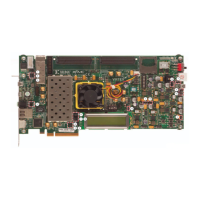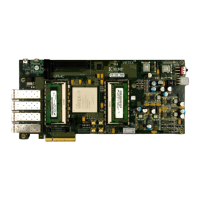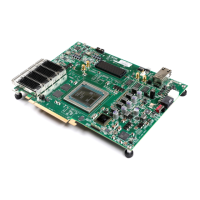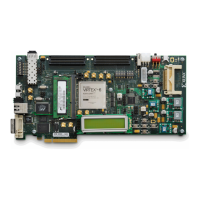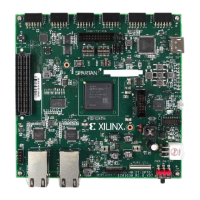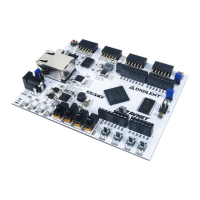Embedded Tri-Mode Ethernet MAC User Guide www.xilinx.com 151
UG074 (v2.2) February 22, 2010
Auto-Negotiation Interrupt
R
Auto-Negotiation Interrupt
Auto-Negotiation is controlled and monitored through the PCS Management Registers
(see Table 4-10, “Control Register (Register 0)”) and is consequently only available when
the optional MDIO Management Interface is present.
Overview of Operation
1000BASE-X Standard
Figure 5-3 illustrates the operation of 1000BASE-X auto-negotiation.
IEEE Std 802.3, Clause 37 describes the 1000BASE-X auto-negotiation function. This
function allows a device to advertise the supported modes of operation to a device at the
remote end of a link segment (the link partner), and to detect corresponding operational
modes advertised by the Link Partner. The operation of the 1000BASE-X auto-negotiation
is summarized:
1. To enable auto-negotiation, both auto-negotiation (see Table 4-10, “Control Register
(Register 0)”), and MDIO (see Table 3-14, “Management Configuration Register”)
must be enabled. Then, auto-negotiation automatically starts:
♦ After power-up, reset, or enabling of the MDIO interface
♦ Upon loss of synchronization
♦ Whenever the link partner initiates auto-negotiation
♦ Whenever an Auto-Negotiation Restart is requested (see Table 4-10, “Control
Register (Register 0)”)
♦ When the PCS/PMA Reset bit is set (see Table 4-10, “Control Register (Register
0)”).
Figure 5-3: 1000BASE-X Auto-Negotiation Overview
Ethernet 1000BASE-X
PCS/PMA or SGMII
Sub-Layer
Virtex-4 FPGA
Ethernet
Media
Access
Controller
PowerPC/
MicroBlaze
Processors
Host Interface
EMAC#CLIENTANINTERRUPT
Auto-Neg Adv
(Reg 4)
Link Partner Ability
Base (Reg5)
Link Partner
Auto-Neg Adv
(Reg 4)
Link Partner Ability
Base (Reg5)
Optical
Fibre
ug074_c03_65_080805
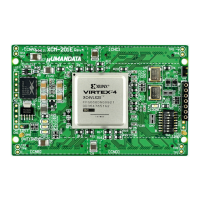
